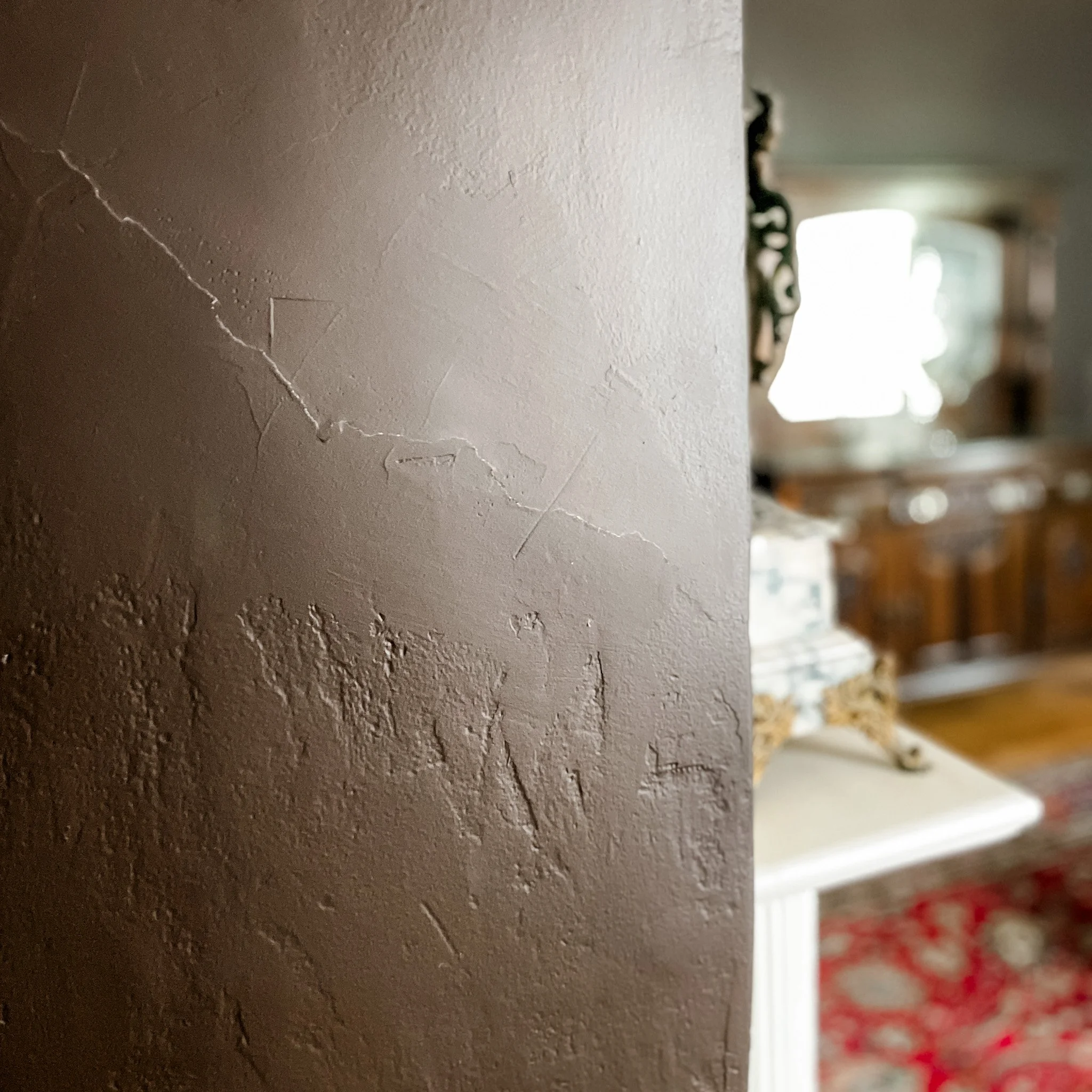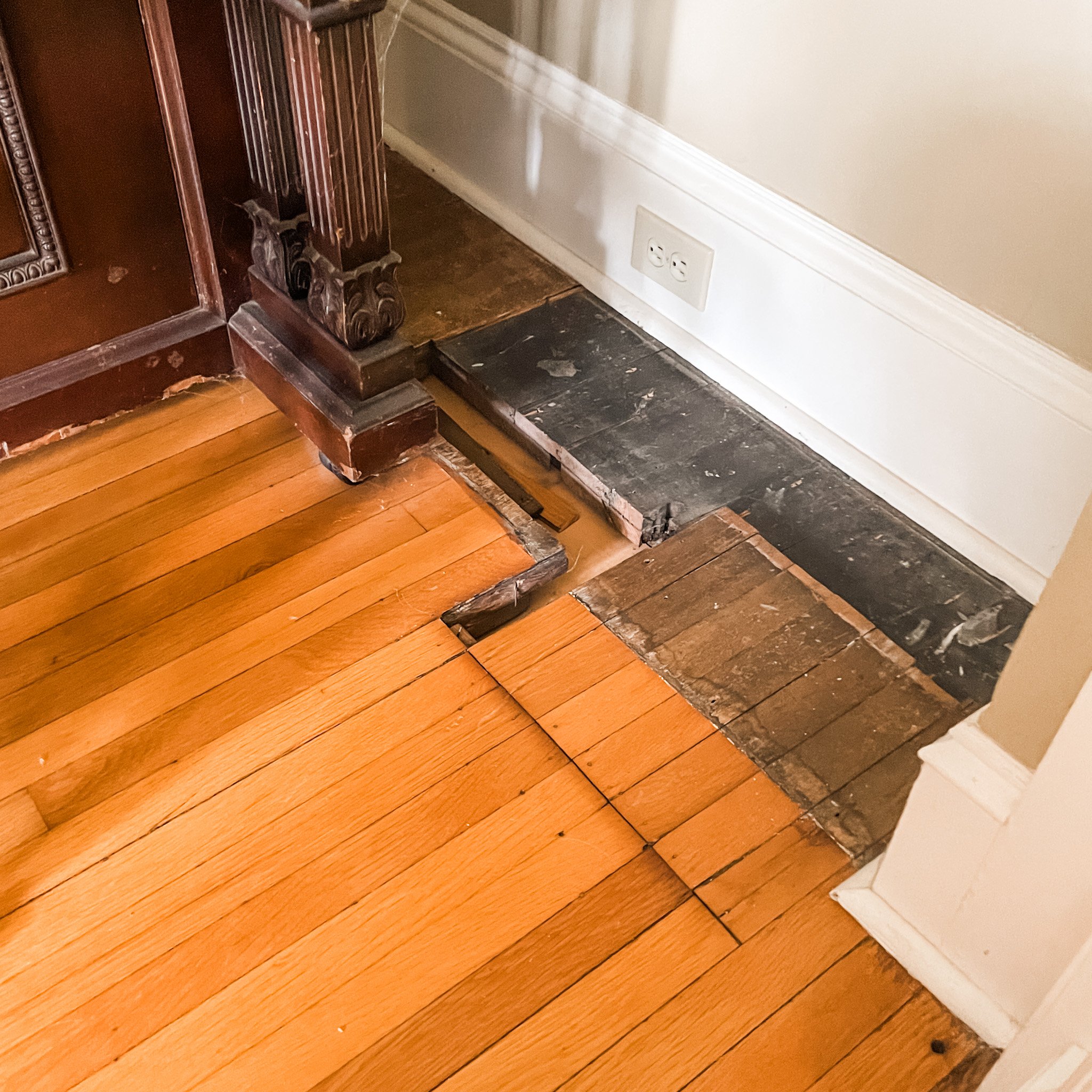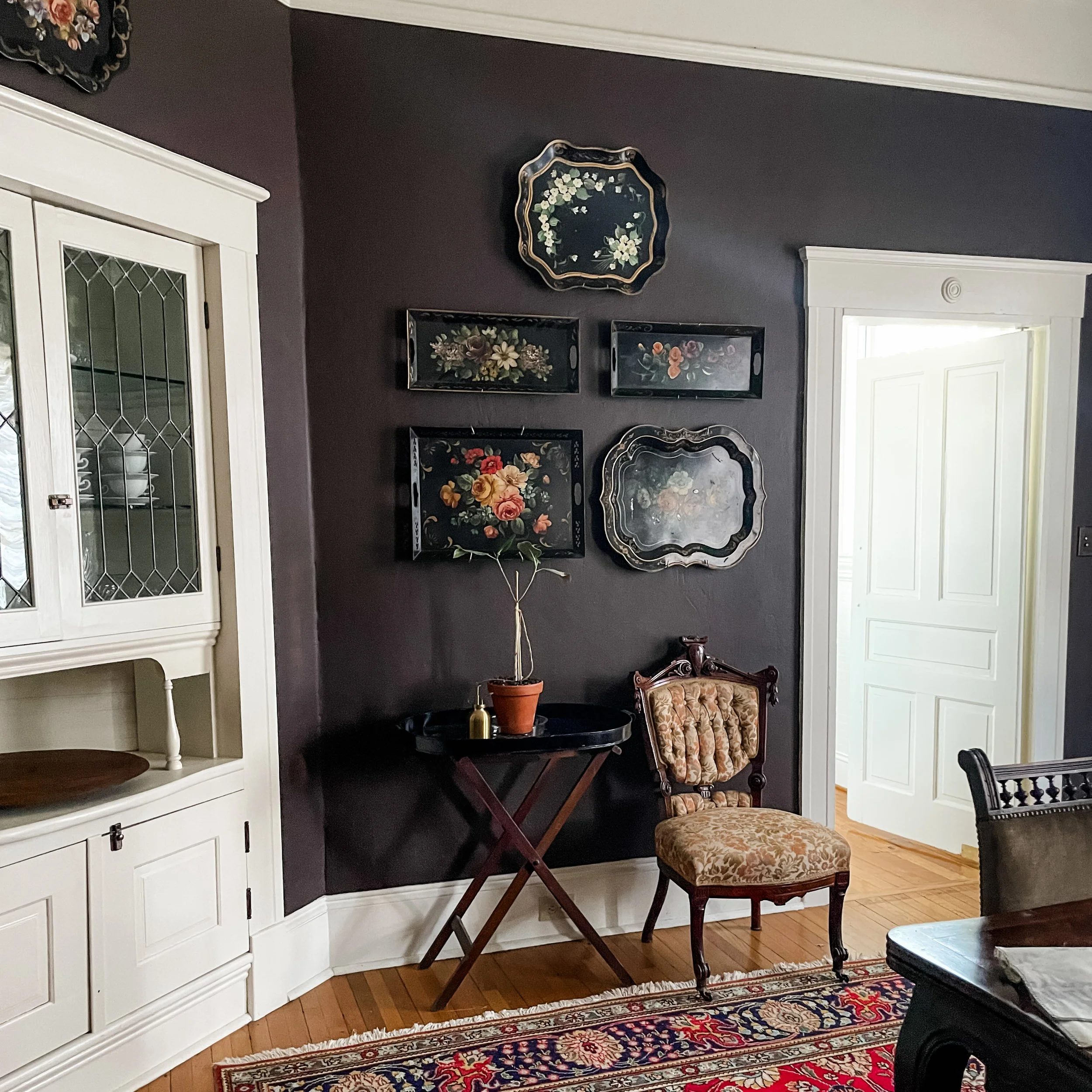Living with Imperfection.
Cracks in the lumpy old plaster walls in the 1906 Turlington house in Mooresville, NC.
Remember when we thought those painted plywood bookshelves were built AFTER the floors were put in over 100 years ago? We do. Every day we do.
“Cracks in the plaster? What cracks?” – Coughs and walks away.
If you’ve ever been curious about what it’s like to live in a 100-year old house, I’m not going to lie to you. It’s like living in a cozy, dream. The old hardwood floors are somehow so warm in the winter and cool in the summer. The doors are heavy. Solid. They still hold the stain from a century ago and are still opened with the decorative hardware the original owners chose. The plaster walls seem positively alive compared to the drywall of newer homes. The glass in the wood windows sag with the weight of history. Our lights don’t come on at the flick of a switch, but with the push of a button. Grab a cup from the butler pantry for a morning coffee on the expansive front porch. Or pick a glass from the formal dining room’s built-in pantry to enjoy a mint julep on the back deck overlooking a backyard filled with lighting bugs. So if you’ve ever dreamt about living in an old house, I’m telling you, it’s exactly as romantic as you think and more. If you’ve ever actually done it, lived in a century home even once, you‘ll likely recognize the feelings stoked above. You also know this: There’s a slight trade off.
I touch on this a little in “How to Live in a Century Home”. And while this isn’t about how challenging it is to care for an old home, it’s always as relevant as prevalent, so bear with me for a bit. Living in a century home is best described as a lifestyle choice. Because you don’t just live in an old house. You actually live WITH it. After all, you’re essentially falling into a committed relationship with a beautiful centurion in questionable health and stability who’s neediness, cantankerousness, and stubborness is only determined by how good your inspection team is. The 1906 home we’re currently living with had a lot of hidden calamities our team missed, and that forced us to quickly come to terms with what we wanted (everything), what the house needed (almost everything), what we could afford to have done (almost none of it), and what we felt we could do ourselves (not a lot confidently). And that’s the lifestyle choice - the weekly prioritization and allocation of resources that your friends in Orange Wood Grove don’t ever, never, ever have to think about.
When we moved into our home, there was a LOT to do. At the top of our list was the big stuff – electric, plumbing, some foundation work. The very bottom? Patching cracks in the plaster walls. 18 years later, guess who’s still looking at those cracks in the walls? Things just keep jumping in front of that thin, little line item. But there’s a danger in getting too comfortable with imperfection. Because the longer you live through fixing all the big stuff, the more the small stuff sort of gets, well, smaller. Cracks in the plaster? That’s just character! Unfinished flooring under a cabinet you tore out? That just shows where that old cabinet used to be. It’s history! It’s hilarious the excuses you start making for the small stuff you haven’t managed to get to yet. The trick, then, is to strike the right balance. After all, if you convince yourself that your dining room light that flickers and crackles is part of the old-world charm, you may not live in an old house very much longer.
Your friends in modern homes may have time to watch the big game over a giant bowl of chips instead of listening to them over a big bowl of wall spackle. Or invest in fast passes at Disneyworld instead of fast paint strippers at Lowes. If you sounds like you’ll be missing out, you’re missing the point. The time and effort and money you’re occasionally putting in is literally improving your lifestyle not for a day or a week, but every day and night you spend in your 100-year old dream home. You’ll be living (if you learn how to live with a little imperfection) a life that is unique, alive, and beautiful while you make your mark in the history of a special place that will be valued and admired for centuries still to come.




